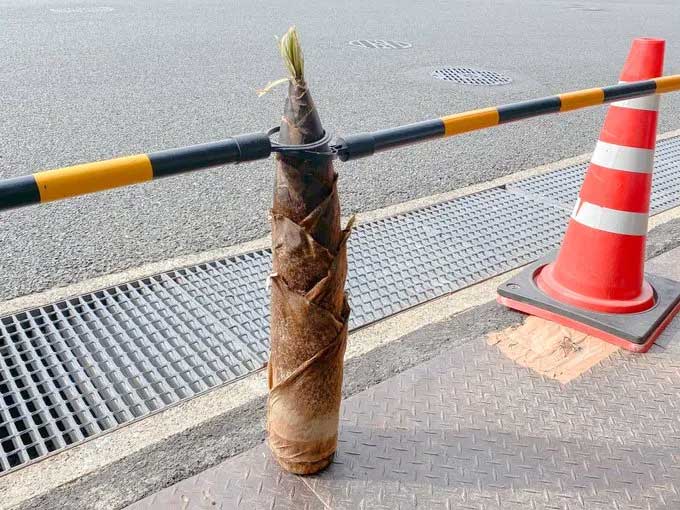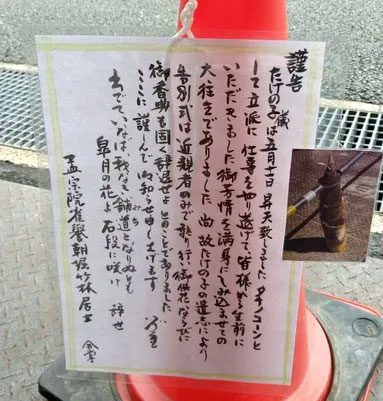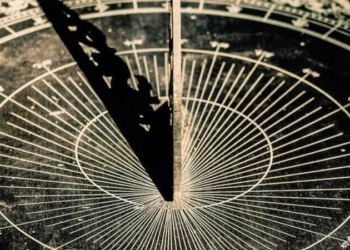Kyoto is renowned as the most cultural city in Japan, where living in harmony and respecting nature is a given for everyone. Since last month, a bamboo shoot has become the famous emblematic character of the Gion district in Kyoto.
Locals refer to it as Takenokone, a play on words with “takenoko”, which means bamboo shoot in Japanese, and “cone.” Takenokone appeared unexpectedly on the sidewalk at the intersection next to Yasaka Shrine, right in front of the sushi restaurant Izuju at the end of April. Due to its size and shape, it was transformed into a traffic cone.

Japan is famous for the intersection of cute, quirky, and cultural elements.
At first glance, people thought this bamboo shoot had accidentally sprouted on the sidewalk, but the truth is that Mr. Norio Kitamura, the owner of Izuju, intentionally placed it there during the restaurant’s renovation. Kitamura received the bamboo shoot, which is about 80 cm long, from a friend and set it up as a traffic cone, hoping it would bring joy to passersby.
Japan has always been known for its blend of cute, quirky, and cultural aspects. During the Golden Week holiday, many tourists flocked to Kyoto to admire Takenokone. However, in mid-May, visitors were surprised to find that the spot where Takenokone once stood now featured a real traffic cone, with only the top covered by the outer skin of the bamboo shoot.
On May 13, a written notice was posted on that cone stating: “On May 11, Takenoko-sama (sama: a very formal honorific in Japanese) ascended to heaven. Takenoko-sama made wonderful contributions during its lifetime and was beloved by many.” The announcement was written in the style of a memorial letter for the deceased in Japan, accompanied by a photo of Takenokone when it was alive.

Obituary notice for the bamboo shoot.
The bamboo shoot was also honored with a posthumous poem and a formal name, Mosoin Suzume Homare Asa Hori Takebayashi Koji, with the part Takebayashi meaning “bamboo forest.”
After the announcement spread on Twitter, many accounts expressed their condolences:
“Rest in peace.”
“Takenokone, I saw you working hard in a documentary. Now rest easy.”
“What a wonderful sight in Kyoto.”




















































